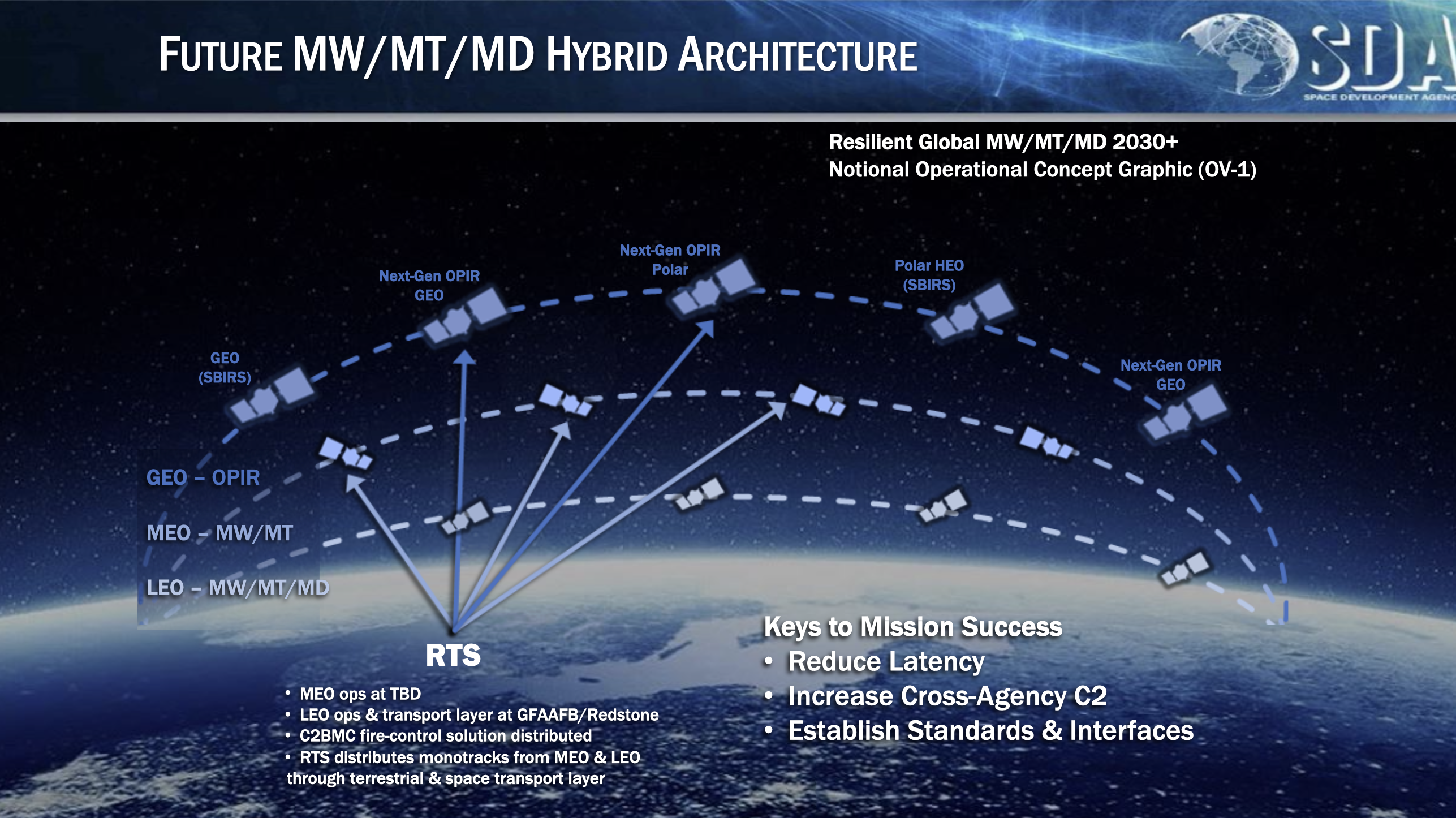Products You May Like
WASHINGTON — The Space Development Agency’s network of sensor satellites in low Earth orbit — known as Tracking Layer Tranche 1 — will not include seven satellites made by Raytheon Technologies as originally planned.
“SDA is reevaluating and considering re-scoping Raytheon’s Tranche 1 Tracking Layer work,” an agency spokesperson said in a statement in response to questions from SpaceNews.
The spokesperson said the agency could not comment on the specifics of why Raytheon will not be delivering seven satellites that the company was expected to build under a $250 million contract SDA awarded in March 2023.
The Tracking Layer Tranche 1 is the first deployment of a multi-phase plan to develop a global missile warning and tracking system. SDA in July 2022 ordered 14 satellites from Northrop Grumman and 14 from L3Harris Technologies.
Raytheon was one of the bidders that didn’t make the first cut. But SDA later decided to add seven Raytheon satellites as the fifth plane of the constellation after Congress increased the agency’s 2023 budget by $250 million specifically to pay for missile-tracking satellites. The $250 million contract also includes ground operations and support services.
Speaking March 18 at the Satellite 2024 conference, SDA Director Derek Tournear said the agency by late 2025 expects to have 28 wide field-of-view missile tracking satellites in operation on orbit, and he did not mention the other seven.
The SDA spokesperson noted that removing those seven satellites should not significantly impact the performance of the missile-tracking network.
‘Minimum viable product’
“It’s important to keep in mind that the minimum viable product for Tranche 1 Tracking is 28 missile warning/missile tracking space vehicles that deliver the minimum viable capability of regionally persistent warning and tracking of missile threats, including advanced threats like hypersonic glide vehicles,” said SDA in a statement.
Further, the Tracking Layer will be augmented with other missile-tracking satellites in low Earth orbit made by the Missile Defense Agency and other spacecraft in medium Earth orbit being developed by the Space Systems Command, the agency said.
“SDA’s work in this area is part of a collaborative approach that includes the MEO missile warning/missile tracking efforts underway at SSC and the integrated data and ground efforts of the Missile Defense Agency,” said the spokesperson. ‘We will deliver our minimum viable capability, and we are not going it alone. It is part of a larger, more robust multi-orbit missile defense network designed to address current and future threats.”
It remains unclear what the new scope of Raytheon’s contract will be.
Industry sources said the issue appears to be that the $250 million contract — a fixed-price agreement committing the supplier to meeting a set cost — would put Raytheon at risk of having to absorb higher than expected overruns due to increased costs.
Raytheon’s parent company RTX said in a statement that it “remains committed to supporting SDA on current and future programs to deliver key capabilities to support the warfighter.” The company did to specifically address the reasons why the Tranche 1 contract is being reevaluated.
Tournear has said procurements of SDA satellite tranches are suitable for fixed-price contracts because the agency buys mature technologies from the commercial market that do not require risky development work. The agency has separate programs for experimental satellites.
